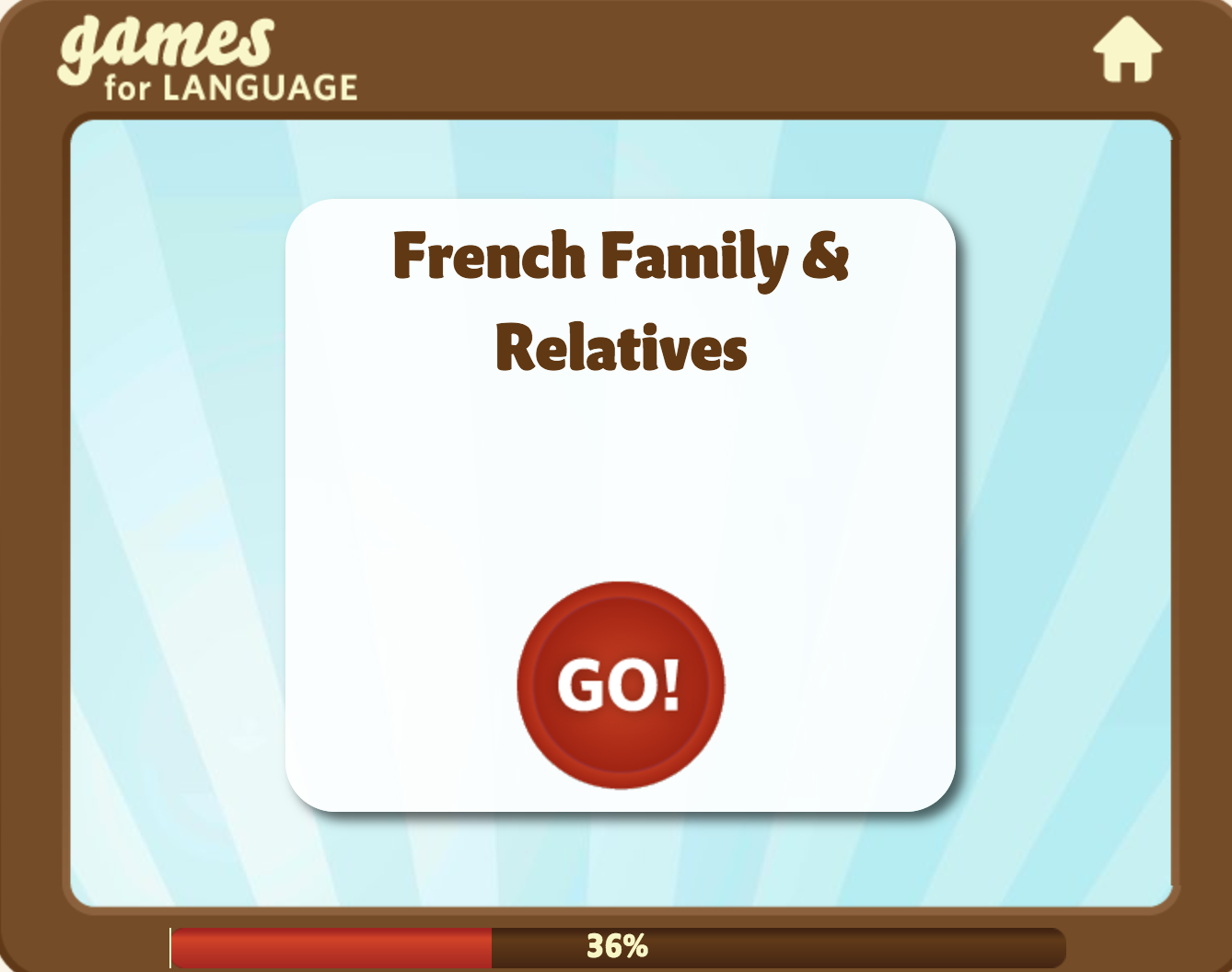Children And Adults Use Games For Language Learning!
 We all know that children use games to learn how things work. They don't need to be taught how to play. They just do it. For them games are a way to explore the world around them.
We all know that children use games to learn how things work. They don't need to be taught how to play. They just do it. For them games are a way to explore the world around them.
Adults see games less as a means for learning, but rather as way to relax and being entertained or - as in this picture - as a family activity. By combining a travel story with games for language learning our courses both teach and entertain.
DIGITAL GAMES FOR LANGUAGE LEARNING
For digital language games, the rules are often simple. The player gains points or advances for making the right match, and loses points or has to replay for getting it wrong. Graphics, sound, and gamification features add fun and excitement.
When Duolingo launched in 2011, the “gamification” of language learning started in earnest. Now there are hundreds of language learning apps available for iOS and Android mobile devices. Most online language learning programs now use games or game-like features.
Games for very young children often match a picture or sound, with a letter or word. Games for preschoolers teach them to recognize words, how to spell them, and how to sound them out. For school children, games can get more complicated. These often involve sentence building, spelling races, and grammar searches.
SECOND LANGUAGE GAMES FOR CHILDREN AND ADULTS
More and more language games for children are being developed, both as web apps or as native apps, available from App stores.
Typical ingredients of second-language games are:
• Flashcards
• Fun graphics and sound
• Simple rules, involving hit and miss
• Rewards, in the form of advancement, points, trophies
• Lots of repetition
• Interactive play
Figuring out how a game works is all part of the learning.
Maybe adults are not as enthusiastic when they get the correct answer as the children in the picture above - but gamification features also help adults to stay motivated. An early feedback from an adult learner was: "I didn't even notice that I was learning. But I was!" And maybe that's one reason, children also like Gamesforlanguage.
GAMES FOR LANGUAGE LEARNING ONLINE
 Our Gamesforlanguage courses and Quick Language Games were originally developed for adult learners. Banking on the wider use of WiFi, we decided against developing a mobile app. We are actually surprised by the number of children in school classes playing our courses and games.
Our Gamesforlanguage courses and Quick Language Games were originally developed for adult learners. Banking on the wider use of WiFi, we decided against developing a mobile app. We are actually surprised by the number of children in school classes playing our courses and games.
This French Quick Language Game, for example, shows some of the games included with our free courses. (Click on the link above or the picture to play it!)
Through feedback, we have learned what works for all players:
• The courses and games are interactive
• The travel story appeals to older children (4th grade and up) who travel with their parents
• The story sequel format with 36 (or 72) Scenes works well for children and adults
• Text-based games practice individual foreign words, phrases, and sentences, as well as English reading and spelling
• Foreign spelling is practiced with simple words
• Travel-story podcasts advance listening skills
MANY DIFFERENT ACTIVITIES FOR LEARNING NEW LANGUAGES
It's clearly a good idea for children and adults to engage in all kinds of different activities to learn and practice languages. Digital games are just ONE tool.
Our 3-year-old granddaughter, for example, is taking French Skype lessons with a tutor several times a week. She loves to sing "un deux trois" and is very proud when she can surprise us with a new French word from time to time.
Adults have access to a large array of resources. They can learn AND entertain themselves with foreign movies, YouTube videos, etc. Or read books, foreign newspaper articles online about topics that really interest them – once they have mastered the basics of a foreign language.
Bio: Ulrike & Peter Rettig are co-founders of Gamesforlanguage.com. They are lifelong language learners, growing up in several European countries before moving to Canada and the United States. You can follow them on Facebook, Twitter, and Instagram.
An expanded version of this post is scheduled has been published on the British website Lingotastic.
Junilearning recently contacted us and suggested that their post, 6 Ways Coding is Teaching Kids Problem Solving, might also be of interest to our readers. Indeed, language learning and coding require very similar challenges and teach children valuable problem solving skills.
